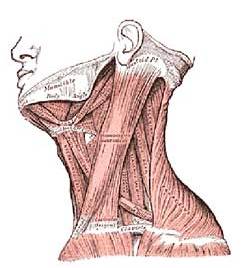A De-stressing Situation
This software is a stretch in the right direction for the stationary worker.
 ON the off chance you haven't yet made your New Year's resolutions (or are already having second thoughts about the ones you did make), here is a downloadable option that could revolutionize--or, at the very least, refresh--your workdays at the computer this year. The program is called Café Yoga, but lest that name conjure images of body pretzeling and other Bhagavad Gita-related intricacies, let me assure you at the outset that the software keeps things simple, using only rudiments of the ancient discipline, and you never have to leave your seat to try it. The most it asks of you is occasionally to slow down, take several deep breaths, and relax. Which, as it turns out, is easier said than done.
ON the off chance you haven't yet made your New Year's resolutions (or are already having second thoughts about the ones you did make), here is a downloadable option that could revolutionize--or, at the very least, refresh--your workdays at the computer this year. The program is called Café Yoga, but lest that name conjure images of body pretzeling and other Bhagavad Gita-related intricacies, let me assure you at the outset that the software keeps things simple, using only rudiments of the ancient discipline, and you never have to leave your seat to try it. The most it asks of you is occasionally to slow down, take several deep breaths, and relax. Which, as it turns out, is easier said than done.
Yoga instructor David Gledhill created the program as a way for workers to control stress while remaining productive and relaxed. Although he has taught yoga since 1980, it is only in recent years, he said, that he began employing the discipline's techniques specifically for computer users. Because he is also a software designer and had begun to experience strains in his back, eyes, and arms from long hours on the job, Gledhill said he began researching the advice of occupational health experts and combining it with the practices he taught.
"I noticed that after too much time at the computer, my body started to sort of seize up, so I went looking for ways to avoid that happening," Gledhill said. "I thought, 'If I'm experiencing this, then other people might be, too,' and I started looking more and more into repetitive strain injuries and carpal tunnel syndrome and what exercises were out there to help prevent such conditions." After experiencing the program's results firsthand, Gledhill began field-testing Café Yoga early last year.
Instant Karma
At the heart of this Flash-based program is a series of 12 yoga-based exercises you can perform while sitting at your desk to stretch everything from your fingers and wrists to your eyes and lungs. Stretching the lungs (which the program more aptly refers to as lower-abdominal breathing) is a particularly important component that accompanies all the other stretches and is distinctly different from the upper-chest, "shallow breathing" typical of those stressed out or nervous. Emphasizing the proper cadence of inhaling and exhaling slowly and deeply, the program features breathing sound clips as a guide. Along with this audio, an animated humanoid demonstrates the steps of each exercise, further underscoring the proper tempo. Text instructions also appear, but, like the sound clips, these can be turned off.
All 12 exercises can be done in roughly 3-, 5-, or 10-minute sessions--your choice--and a built-in timer allows you to preset how often you want the exercises to appear on your screen, from once a day to hourly or more. The program also includes a "body map" overview screen, which users can scroll over to obtain muscle-group graphics and brief, witty descriptions of what each stretch accomplishes (e.g., for the Neck Bend-Head to Shoulder stretch, an illustration from Gray's Anatomy is accompanied by Gledhill's observation that this stretch is "Just the right skill for looking at the world sideways--where it may all make more sense.").
The program is user friendly, easy to download from www.stressnot.com, and moderately priced at $14.99, with corporate discounts and branding opportunities available. My own experience, having had the program on my computer for two weeks now, is that it's far too easy to cancel the session when it appears on screen. Even though I've customized the sessions' schedule, it seems I'm invariably right in the middle of something and not willing to take the break when the program pops up. Routinely, I've been opting to turn it off with a click, hoping each time that with its next appearance I'll be ready to relax.
Just Breathe
Gledhill said the easy, one-click session-canceling feature is part of the program's design because the alternative--having the computer lock down until you've done your exercises--is not exactly conducive to reducing stress and therefore not an option.
"I don't want people to see it as an irritant, but rather as a tool in the war against stress," he said. "It leaves it up to the user to be proactive, but all the tools are there. I'm still saying a walk in the park is better than staying at your computer all day, but if you are going to stay at your computer, here's what you can do every so often that can lessen the impact."
Gledhill said his program is "a gentle intro to the world of yoga itself" and that he hopes it leads users to investigate that world more fully. Toward that end, he has included a variety of yoga- and occupational health-related links at the stressnot.com site, in addition to a full demo of Café Yoga. My take is that while it is a subject worth exploring, it will require a firm resolution to reap the full benefits this software offers.
This column appeared in the January 2007 issue of Occupational Health & Safety.
This article originally appeared in the January 2007 issue of Occupational Health & Safety.